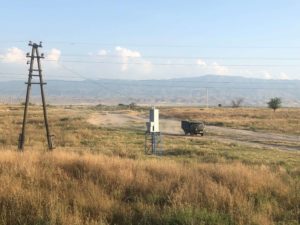In an address to parliament, the president of Tajikistan announced there hadn’t been any new cases of Covid-19 in the country this year. Yet, observers and experts say the Central Asian republic has not been a reliable source of information about the virus.
Tajikistan is Covid-free, President Emomali Rahmon announced on 26 January. “Today we are grateful that there have been no cases of coronavirus infection in the country since the beginning of January, that is, I confidently declare that there is no COVID-19 in Tajikistan,” he told parliament. Rahmon had already claimed that the virus had “nearly disappeared” from Tajikistan in his New Year’s address to the nation at the end of 2020.
Want more Central Asia in your inbox? Subscribe to our newsletter here.
It is a surprising declaration at a time when other Central Asian states, and countries around the world, are showing high numbers of new infections and deaths from the virus: Kazakhstan is registering over 1,000 new cases a day. In addition, the new variant of Covid-19 originating in Britain was registered in Uzbekistan for the first time on 30 January.
Following Rahmon’s speech, the government reopened mosques on 1st February but, as Radio Free Europe / Radio Liberty (RFE/RL) reports, said they would have to observe sanitary measures. The president also warned citizens should still respect sanitary regulations such as wearing masks.
An unreliable track record
The official coronavirus count from the Tajik authorities shows 13,308 cases and 90 deaths, with no new cases since 10 January. This contradicts Rahmon’s assertion that there were no new cases in 2021: covid.tj shows a dozen new infections between 1 and 10 January.
But even these numbers are in doubt. “To put it mildly, the Tajik government does not have the best track record of transparency and accurate information surrounding the pandemic,” Edward Lemon, a research assistant professor at Texas A&M University and president of the Oxus Society for Central Asian Affairs, said.
Read more: Is Tajikistan really free from coronavirus?
Last year, Tajikistan did not record any Covid-19 cases until 30 April, despite local media reporting suspicious deaths as early as March. Even after that, an online list by local activists, since then taken down, gave a much higher death toll. In June, RFE/RL said it had been able to verify that 152 people on the list had in fact died from Covid-19. What’s more, using government data, the Tajik media Asia-Plus showed there had been approximately 4000 more deaths in 2020 than in 2019.
A leader “who can address any issue”
“There is always a desire from the government to portray itself as being successful and to portray Emomali Rahmon himself as a leader of global standing who is able to address any issue,” Edward Lemon said. In this light, Emomali Rahmon’s declaration is a way to reassert his authority after a year of economic crisis and inflation. An analysis shared by the Tajik political scientist and civil society activist Parviz Mullojonov, who sees in Tajikistan’s Covid-19 figures “an intentional exaggeration for political and economic reasons”.
“Social tension is increasing because there are no jobs in the country and Tajik workers cannot go to Russia,” Parviz Mullojonov explained. Tajikistan’s economy relies on its labour migrants, for the most part in Russia. According to the World Bank, personal remittances represented 28.5% of the country’s gross domestic product (GDP) in 2019. As Russia’s borders closed to prevent the spread of Covid-19 on 18 March, many seasonal workers have stayed in Tajikistan. According to Russia’s central bank, remittances from Russia to Tajikistan have fallen by nearly 40% in the first half of 2020, Asia-Plus reports.
There are nevertheless other factors to take into account. “The composition of the Tajik population could also explain the low numbers,” Mullojonov said, pointing out that Tajikistan’s population is younger than that of European countries such as France or the UK. Only 3% are over 65, which could mean there are fewer at-risk people and thus more asymptomatic coronavirus cases. In contrast, 18.5% of the UK population is over 65 years old.
Valentine Baldassari
Additional reporting by Clara Marchaud
For more news and analysis from Central Asia, follow us on Twitter, Facebook, Telegram, Linkedin or Instagram.
 Tajikistan declares itself coronavirus-free
Tajikistan declares itself coronavirus-free 



